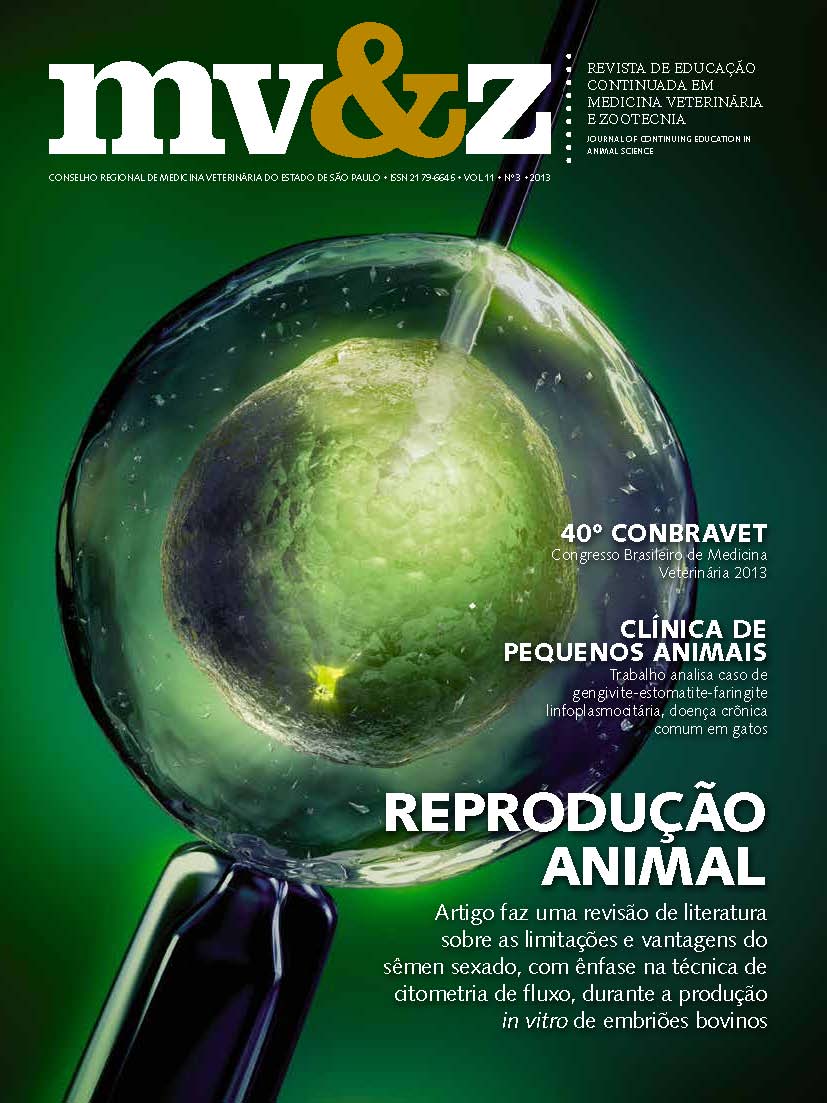Evaluation of neutralizing antibodies in cats prime vaccinated for rabies
Conteúdo do artigo principal
Resumo
In some countries, the number of pet cats is increasing and in some places already exceeds the number of pet dogs. The behavioral aspects of these animals as varied degree of dependence on humans, a greater number of individuals in the colonies and their predatory instinct increase the risk of infection by rabies virus. The aim of this study was to analyze the immune response of cats who would travel to the European Community and that received only one dose of cell culture rabies vaccine, in the triennium 2009‐2011. We analyzed the request forms of virus neutralizing antibodies (VNA) titration. Were selected samples from animals that had received only one dose of vaccine until the date of blood collection. Information on age, race and period of vaccination and blood collection were evaluated. Serum samples were tested by Rapid Fluorescent Focus Inhibition Test (RFFIT) for determination of VNA. The animals with less than one year were considered young and aged greater than or equal to one year were considered adults. Titers of VNA = 0.50 IU/mL were considered as protectors. Of the total 120 samples, 90.8% (109) had protective titers of VNA, regardless of race, age or vaccination period. Approximately 9.2% (11) of the animals had titers of VNA lower than protective levels, independent of age and the period of vaccination and the collection of material. As for race, 88% (8) of the samples that were not protective bonds were mixed breed cats. It was concluded that there was satisfactory immune response in the animals analyzed. Studies are needed to evaluate immunity against other factors of the population, mainly socioeconomic, since most of cats are semi domiciled or feral, increasing the risk contact with the rabies virus.
Detalhes do artigo
Seção
1. Autores mantém os direitos autorais e concedem à revista o direito de primeira publicação, com o trabalho licenciado sob a Creative Commons Atribuição-NãoComercial-SemDerivações 4.0 Internacional
2. Autores têm autorização para assumir contratos adicionais separadamente, para distribuição não-exclusica da versão do trabalho publicada nesta revista (ex.: publicar em repositório institucional ou como capítulo de livro), com reconhecimento de autoria e publicação inicial nesta revista.
3. Autores têm permissão e são estimulados a publicar e distribuir seu trabalho online (ex.: em repositórios instituicionais ou na sua página pessoal) a qualquer ponto antes ou durante o processo editorial, já que isso pode gerar alterações produtivas, bem como aumentar o impacto e a citação do trabalho publicado (Veja O Efeito do Acesso Livre);
